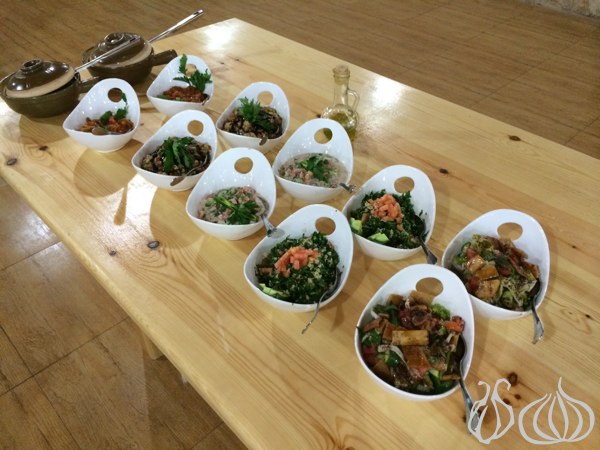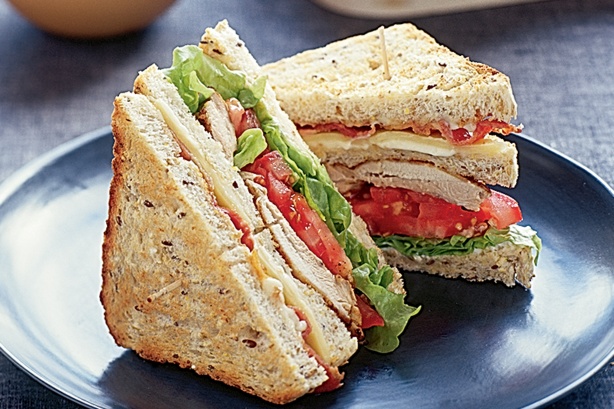Al Qantarah restaurant, located a few minutes away from the Petra site, offers open kitchen gatherings on its first floor. It hosts big groups of 10 to 20 persons, who gather to cook and eat. We were welcomed at 7pm for an early dinner. Chef Abdel Hafez Al Qaissy known as Abou Shady was eagerly waiting for us. We were handed some aprons, gloves and head covers as we each took a cooking spot.
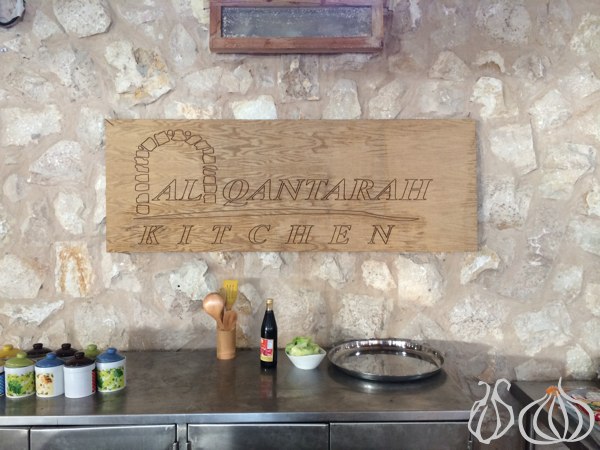
On the menu was lentil soup, baba ghannouj, tahina salad, fattouch and tabbouleh followed with some fried tomatoes and onions; and for main dish: Chicken maklouba.
Khaled, Marisol, Monalisa, Charbel, Najib, Rosanie and Justine started preparing themselves to start cooking, while I decided to do the photos and live write up. "Start by cutting the vegetables in small cubes," says Abou Shady. He was keen on telling everyone about the best way to cut the vegetables homogeneously way without cutting your finger...
The Jordanian cuisine differs a bit from the Lebanese one, things I discovered today. Green pepper is added to the tabbouleh while baba ghannouj and moutabal are two different things, which I initially thought were the same. Baba ghannouj or Batenjen raheb, as we call it in Lebanon, is a mix of eggplant, tomatoes and green pepper without tahina and without Laban. The "batenjen moutabbal" is a mix of Laban, tahina and eggplant with some spices. Each has a different texture and tastes different. Tonight we were having the Baba Ghannouj.
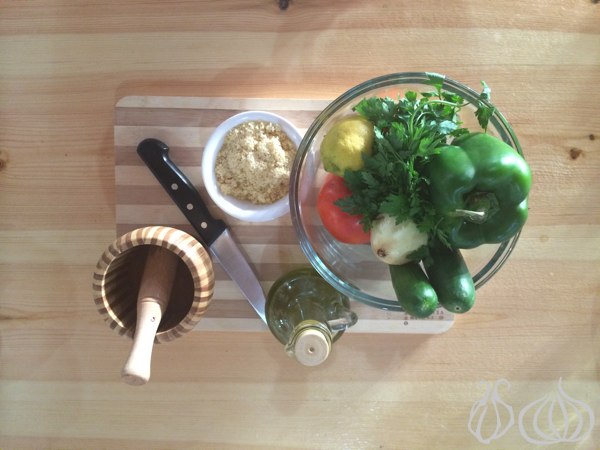
- Te2layet banadoura: Onions, garlic, tomatoes, sweet green pepper, spicy peppers, spices, salt and pepper and olive oil fried in a casserole for ten minutes then enjoyed as is or with meat.
- Baba ghannouj: Grilled eggplants, diced tomatoes, onions, garlic, lemon sauce, salt, pomegranate sauce, minced parsley and spicy peppers. Mixed and served as is without cooking.
- Chicken Maqlouba: The maklouba is different from the Lebanese one we know since the Jordanians use big chunks of goat meat, unlike the minced one enjoyed in Lebanon. A casserole made of layers of rice, vegetables and meat. The one we were preparing today didn't contain meat at all but chicken.

Maklouba is pre-cooked in segments, vegetables first and rice second, folded with a mix of traditionally Middle Eastern flavors – turmeric, cumin, sumac and cinnamon, depending on the recipe. Piled artfully into a pot and cooked over the stove, the whole lot of it is tipped upside down on the plate once complete, revealing the patterns of meat and vegetables below. The rice (used to getting its own plate) is relegated to second billing. It’s not a difficult dish to make, though it does take separate pots to get it right and takes a few hours. Presentation, however, is key: when you up-end the pot as you serve the dish, you want a neat pile of veg and meat to stare at. Not spilling everything out as you flip over the pot is also key. After cooking, the pot is flipped upside-down onto the plate when served, hence the name maqluba which translates literally as "upside-down".
How to do it: slice some tomatoes, green pepper sliced in layers, sliced fried potatoes and fried cauliflower, prepare uncooked rice soaked in water for couple hours and prepare the chicken cooked in a marmitte. Start by laying an ingredient after the other. Tomatoes followed by rice, the cauliflower and potato mix followed by rice, the peppers followed by rice and then the chicken half cooked followed by all the remanning rice and the chicken sauce on top. Cook the mix for 20 minutes.
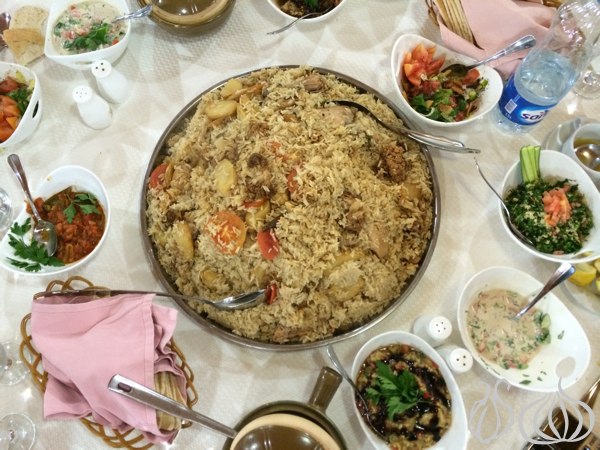
- Tahina salad: This was a premiere for me. The Jordanian tahina salad was more of a soup. Vegtables floated in a liquid form of tahina. Prepare water and lemon in a bowl, add salt and start shaking until the tahina turns into white. Add some diced vegetables and served as is.
Thanks to Chef Abdel Hafez, we enjoyed a nice and tasty meal, something different than the traditional mezze we have been eating for the past week.
Tags:
tabbouleh moutabal Abdel Hafez Al Qaissy Chef Abdel Hafez Al Qaissy lentil soup tahina salad fat touch chicken maklouba baba ghannouj Khaled Marisol Monalisa Charbel Najib Rosanie Justine
Categories:
Spotted Stories


















